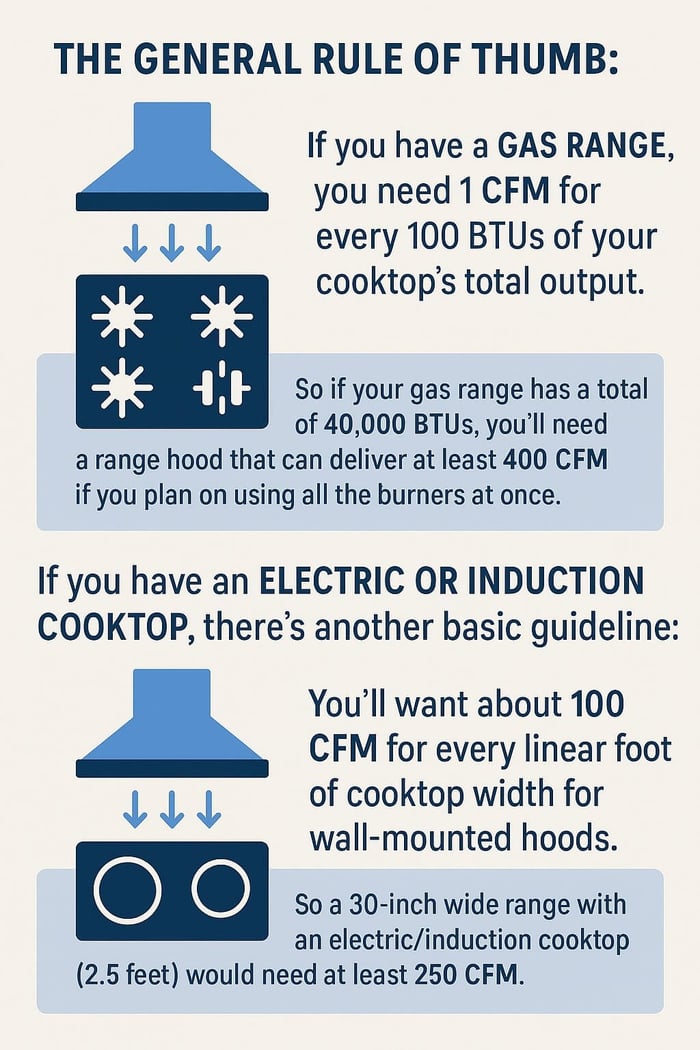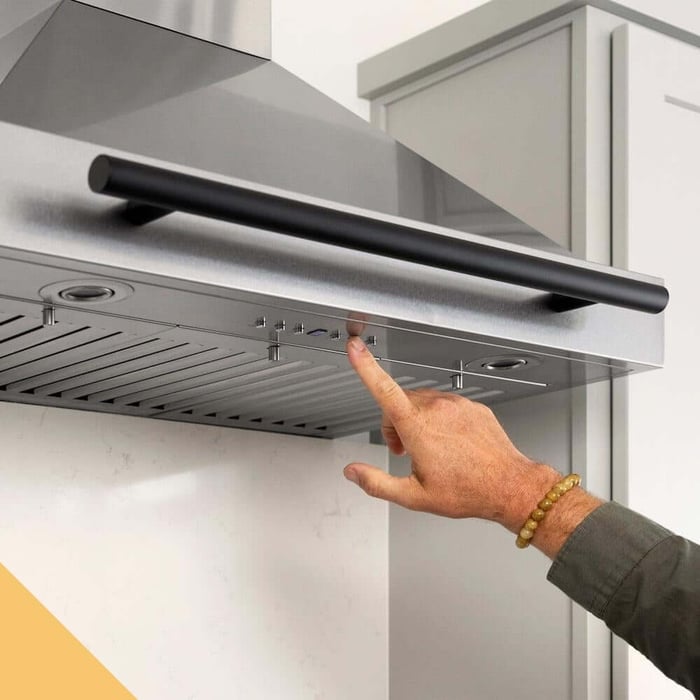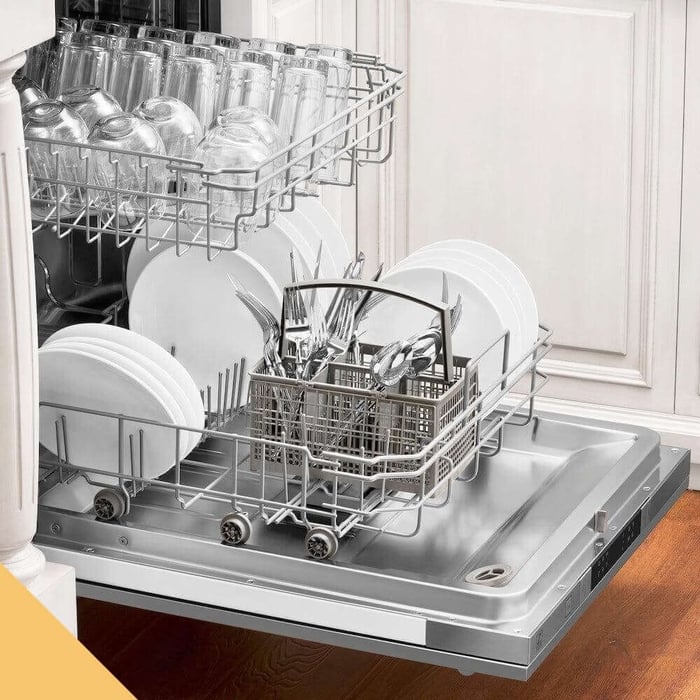When you're shopping for a new range hood, you'll quickly come across the term CFM, which is short for Cubic Feet per Minute. It's a key number that tells you how powerful the hood is when it comes to moving air. But how do you know how many range hood CFM you actually need? And what happens if you go too high?
There are plenty of guides out there that exhaustively explain CFM and oftentimes end up saying you need more CFM than you really do which can lead to unexpected requirements and costs.
In reality, choosing the right CFM is fairly simple, that’s why this guide is aimed at being straightforward.
In plain English, assuming your range hood is going to be mounted between 30 and 36 inches above the cooking surface, to find out how many CFM you need, use these two simple tips:
1. Gas Burners: Use Your BTUs
If you have a gas range, calculate how many BTUs (British Thermal Units) the burners produce. The more BTUs, the more ventilation you’ll need. You can usually find information about burner BTU output in the owner’s manual, on the back of the appliance, or underneath the cooktop on a specification label. Remember, the BTU output specified is the maximum output per burner.
The general rule of thumb:
If you have a gas range, you need 1 CFM for every 100 BTUs of your cooktop’s total output.
So, if your gas range has a total of 40,000 BTUs, you’ll need a range hood that can deliver 400 CFM if you plan on using all the burners simultaneously at full power. (If you plan to go beyond 400 CFM, read about make-up air below.)
2. Electric/Induction Burners: Use the Width of Your Cooktop
If you have an electric or induction cooktop, there’s another basic guideline.
You’ll want about 100 CFM for every linear foot of cooktop width for wall-mounted hoods.
So a 30-inch wide range with an electric/induction cooktop (2.5 feet) would need at least 250 CFM if you plan on using all the burners simultaneously at full power.
Island hoods often need more CFM since they don’t have a wall to help direct smoke and fumes. We recommend adding an additional 100-200 CFM if you plan on using an island hood.


Quick Tips
Don’t undersize your hood — a bit more power is better than not enough.
Look for multi-speed hoods so you can dial it up or down depending on what you’re cooking.
If your hood is over 400 CFM, ask your contractor or building inspector if make-up air is required.
And that’s it! Well, most of it anyway. If you calculate that you will need more than 400 CFM, keep reading to learn about make-up air.
What Is Make-Up Air?
Here’s something that often gets overlooked: make-up air.
When your range hood pulls air out of the kitchen, that air has to be replaced from somewhere; otherwise, your house can develop negative air pressure. That might sound harmless, but it can lead to:
Poor HVAC performance
Doors that are hard to open or slam shut
Dangerous back-drafting from gas appliances
Air “leaks” from unexpected sources such as cracks or weatherstripping
In many places, building codes require a make-up air system if your range hood exceeds 400 CFM. This system brings fresh air into your home to balance out the air that the hood is removing.
TL;DR: If your range hood is rated above 400 CFM, check your local building code — you might legally need a make-up air system. Be sure to double-check with your contractor or building inspector, as this can significantly increase the cost and complexity of your range hood installation.
Final Considerations (really)
Your range hood’s performance is also affected by:
Style: Island and ceiling hoods need more CFM than wall-mounted or under-cabinet hoods.
Ducting: Long or narrow ducts and ducts with too many bends or elbows reduce performance. Use short, straight, and smooth ducting whenever possible.
Height: The higher the hood is installed above the cooktop, the more power and/or width it needs to be effective. For ceiling-mounted and downdraft hoods there are additional considerations, contact our range hood experts if you plan on installing one of these hoods and have questions about CFM.
The Bottom Line
Choosing the right range hood CFM can seem difficult, but all it involves is calculating the airflow you need to keep your kitchen safe, clean, and comfortable. Use the width and BTU output of your range to guide your CFM needs, and don’t forget to plan for make-up air if you’re going big.
Looking for more guidance on range hood CFM or have a unique situation not addressed in this guide? Contact us to speak with one of our range hood experts today!
Connect with us on social media!
Facebook: The Range Hood Store
Instagram: @therangehoodstore
YouTube: The Range Hood Store
Pinterest: @TheRangeHoodStore






